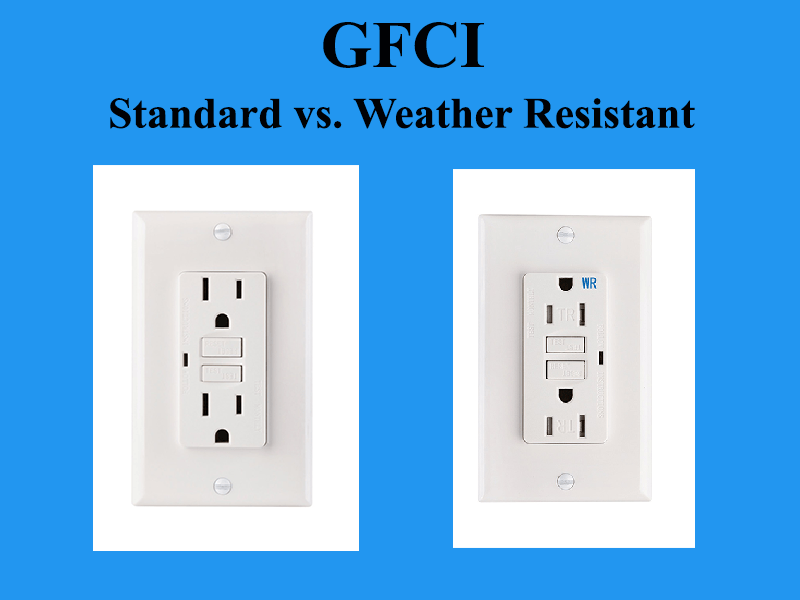
Ground Fault Circuit Interrupter (GFCI) outlets are essential for electrical safety in areas prone to moisture. They safeguard against shock by interrupting power when a current leak is detected. But for outdoor applications, a new question arises: standard GFCI or weather resistant (WR) GFCI?
This blog dives into the world of GFCI outlets, exploring the pros and cons of standard and WR options to help you make an informed decision.
GFCI 101 and Code Compliance
- GFCI Basics: These outlets provide shock protection in damp or wet locations like bathrooms, kitchens, laundry rooms, and outdoors. They feature “test” and “reset” buttons for functionality checks.
- Code Compliance: The National Electrical Code (NEC) mandates GFCI protection in various areas, ensuring safety in potential moisture zones.
- AFCI Option: Arc Fault Circuit Interrupter (AFCI) outlets provide additional protection by detecting and interrupting electrical arcing, a fire hazard. Some circuits might require AFCI or GFCI protection.
Standard vs. WR GFCI Outlets
- Standard GFCI: These outlets offer core GFCI functionality at a lower price point. However, the plastic housing and metal components are susceptible to UV damage and corrosion over time, especially outdoors.
- WR GFCI: Designed for outdoor use, WR GFCI outlets boast several advantages:
- Enhanced Durability:
- Metal Components: WR outlets have corrosion-resistant metal parts to withstand moisture exposure.
- Plastic Housing: The plastic shell is more UV and temperature resistant compared to standard outlets.
- Circuit Board Coating: Some WR GFCI outlets have a protective coating on the circuit board for improved moisture resistance.
- Enhanced Durability:
Cost vs. Value
Some electricians advocate for WR GFCI outlets, highlighting their longevity and code compliance, justifying the slightly higher cost. Others argue that standard GFCI outlets with weatherproof covers can offer similar protection at a lower upfront cost.
Real-World Experiences
Opinions vary on WR GFCI performance. Some electricians have had successful experiences with both types, while others have encountered failures. Remember, proper installation and maintenance are crucial for any electrical outlet.
Making the Right Choice
The decision between standard and WR GFCI outlets depends on specific factors:
- Budget: Standard GFCI outlets are more affordable.
- Location: Consider the exposure to sunlight, moisture, and extreme temperatures. For areas with direct sunlight, frequent rain, or high humidity, WR GFCI outlets might be a better choice.
- Local Codes: Check if WR GFCI outlets are mandatory in your area.
- Peace of Mind: WR GFCI outlets offer potentially longer lifespans and enhanced protection.
Consult a licensed electrician: You can also consult a licensed electrician to assess your specific needs and recommend the most suitable GFCI solution for optimal safety and code compliance. Consider contacting organizations like the National Electrical Contractors Association (NECA) or the Electrical Safety Foundation International (ESFI) for help finding qualified professionals.
Have you ever replaced a GFCI outlet? Share your experiences in the comments below!
(Here at GPMOR, we’ve been a leading provider of electrical safety solutions since 2001. Our commitment to innovation and quality ensures you have the latest advancements in electrical protection and control. Explore our range of GFCI outlets, dimmer switches, and more! Visit our full “About Us” page to learn more about our journey and dedication to building safety.)
